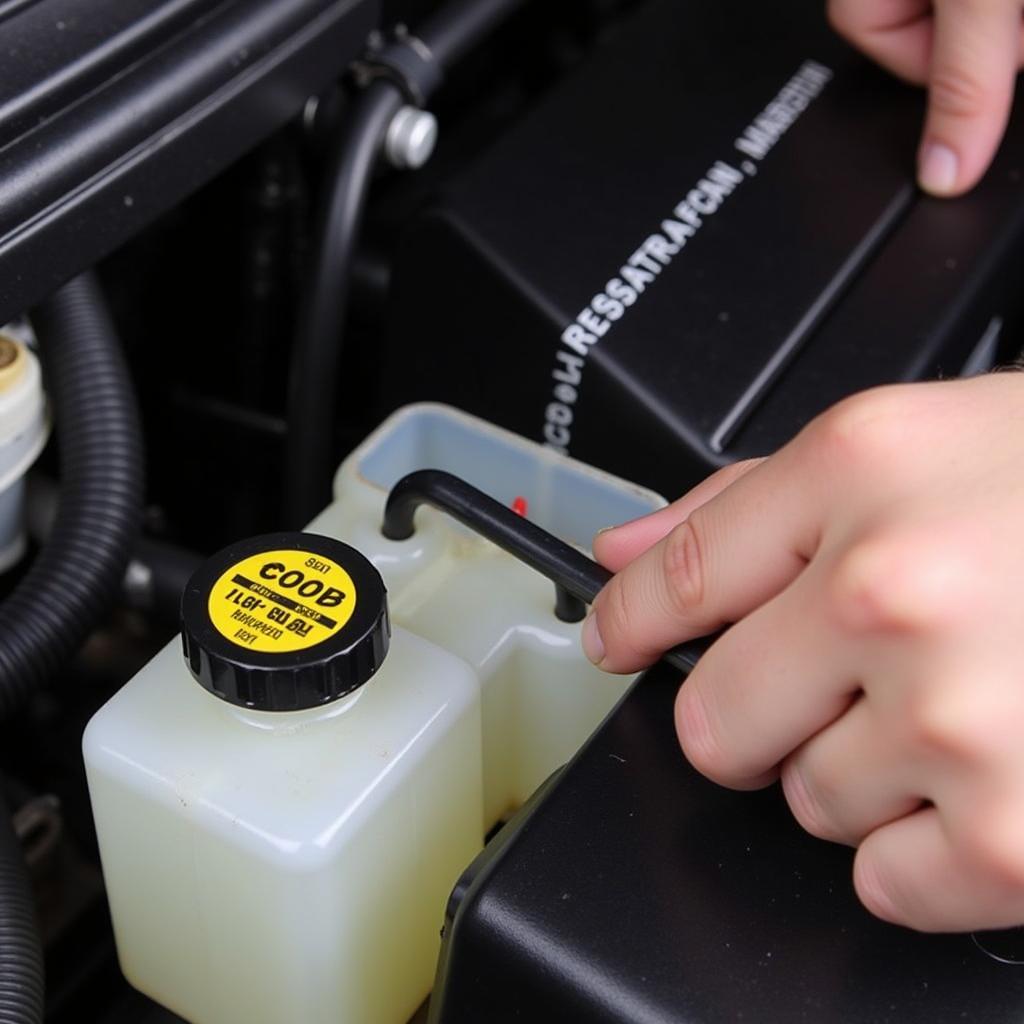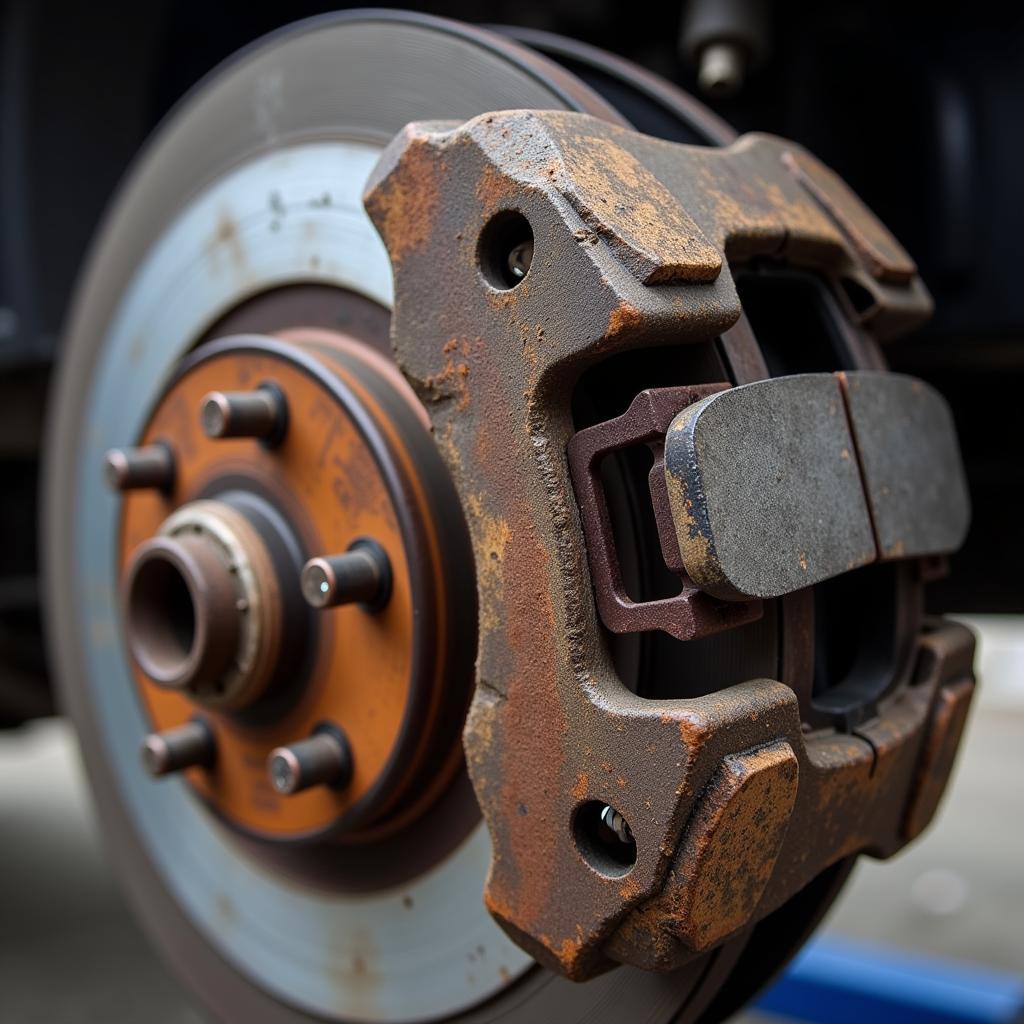A brake warning light illuminating on your dashboard while driving can be a jarring experience. It signals a potential issue with your braking system, demanding immediate attention. Understanding the causes and solutions can help you address the problem effectively and ensure your safety on the road.
The brake warning light can indicate various problems, from low brake fluid to more serious issues like worn brake pads or a malfunctioning ABS system. Let’s delve into the common reasons behind this warning light and how to troubleshoot them, including remote diagnostic options. Don’t hesitate to consult resources like the information on the 2018 Kona brake warning light if you own that particular model.
Understanding Your Brake Warning Light
The brake warning light is a crucial safety feature in your vehicle. Its primary purpose is to alert you to potential problems within your braking system. Ignoring this warning could lead to dangerous driving conditions and potential accidents.
Common Causes of a Brake Warning Light
There are several reasons why your brake warning light might appear while driving:
- Low Brake Fluid: This is the most common cause. A leak in the brake lines or worn brake pads can cause the fluid level to drop, triggering the warning light.
- Worn Brake Pads: Brake pads have wear indicators that activate the warning light when they reach a certain level of wear.
- ABS Malfunction: A problem with the Anti-lock Braking System (ABS) can also illuminate the brake warning light. This could be due to a faulty sensor or other components within the ABS system.
- Parking Brake Engaged: While seemingly obvious, sometimes the parking brake can be partially engaged, triggering the light.
- Faulty Brake Light Switch: In some cases, a faulty brake light switch can cause the brake warning light to illuminate even if the brakes are functioning properly.
You might find the information on Jaguar brake pad warning helpful if you are experiencing this specific issue.
Troubleshooting the Brake Warning Light
When your brake warning light appears, the first step is to safely pull over and assess the situation. Check your parking brake to ensure it’s fully disengaged. If the light remains on, further investigation is needed.
Checking Brake Fluid Levels
Locate the brake fluid reservoir under the hood and check the fluid level. If it’s low, add the correct type of brake fluid recommended for your vehicle. If the fluid level drops again quickly, it indicates a leak that needs professional attention.
 Checking Low Brake Fluid Level in Car
Checking Low Brake Fluid Level in Car
Inspecting Brake Pads
Visually inspect your brake pads through the wheel spokes. If they appear thin or worn, it’s time for a replacement. If you’re unsure, consult a mechanic.
Diagnosing ABS Issues
Diagnosing ABS problems typically requires specialized diagnostic equipment. A mechanic can scan the system for fault codes and identify the specific issue. Resources like checking brake pads warning Mercedes can offer model-specific information.
The article on the anti lock brake warning light provides more detailed information on this topic.
Remote Diagnostics and Software Solutions
Modern vehicles often incorporate sophisticated software that controls various systems, including the brakes. Remote diagnostics and software updates can sometimes address brake warning light issues. These services can identify software glitches, recalibrate sensors, or even update the ABS system remotely.
Benefits of Remote Diagnostics
- Convenience: No need to visit a physical repair shop.
- Speed: Diagnostics and updates can be performed quickly.
- Cost-effective: Can be more affordable than traditional repairs.
For example, information on the Ford KA brake fluid warning light might be available through remote diagnostic services.
Conclusion
A brake warning light appearing while driving should never be ignored. By understanding the potential causes and troubleshooting steps, you can take appropriate action to ensure your safety. Whether it’s a simple fix like adding brake fluid or a more complex issue requiring remote diagnostics or professional repair, addressing the problem promptly is crucial. Remember to consult resources like those linked throughout this article for model-specific information.
FAQ
- What should I do if my brake warning light comes on while driving? Safely pull over, check your parking brake, and inspect your brake fluid level. If the light remains on, seek professional help.
- Can I drive with the brake warning light on? It’s not recommended. Driving with a potential brake issue can be dangerous.
- How often should I check my brake fluid? Check your brake fluid level at least once a month.
- What does it mean if my brake pedal feels spongy? A spongy brake pedal often indicates air in the brake lines.
- How much does it cost to replace brake pads? The cost varies depending on the vehicle and the type of brake pads.
- Can remote diagnostics fix my brake warning light issue? In some cases, yes. Remote diagnostics can identify and address software-related problems.
- What is the difference between the brake warning light and the ABS light? The brake warning light indicates a general brake system issue, while the ABS light specifically signals a problem with the Anti-lock Braking System.

